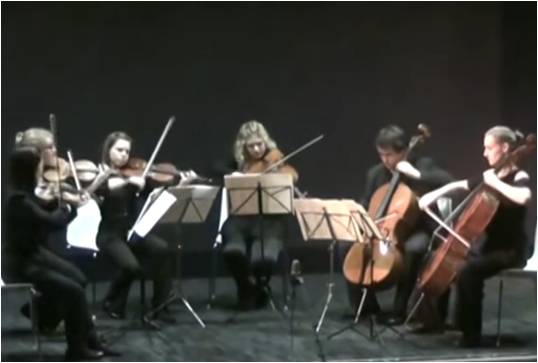The Making of a Masterpiece
The Making of a Masterpiece (Gresham College). In this series of lectures, Professor Christopher Hogwood presents a how-to guide and discusses the key features of the greatest musical works in history. He examines a number of acknowledged masterpieces, but each from a select angle only - their scoring, compactness, virtuosity, accessibility, memorability or other flavour. This series also features performances by artists from the Royal Academy Music.
Christopher Hogwood CBE was a world-renowned conductor, keyboard player, musicologist, writer, editor and broadcaster. As well as being the Gresham Professor of Music between 2010 and 2014, he was the founding director of the Academy of Ancient Music for over thirty years, before holding positions at the Royal Academy of Music, the University of Cambridge and Cornell University.
(from gresham.ac.uk)
 |
Keep it Short: J.S. Bach's Magnificat
The art of being succinct is not one always associated with the works of Bach; in his compact setting of the Magnificat he employs economy and symbolism to illustrate each verse in a few minutes of music which challenge the reader of "de-code" the full message.
The Joy of Six: Brahms and Strauss
The choice of instrumental grouping can make or break a composition; the string sextet, a notoriously difficult combination, takes on a forward-looking guise with Strauss in probably the most exquisite of all music designed to be played off-stage, while Brahms looks back to the baroque with his solutions: sonority is the key.
Remember Me: Pachelbel, Purcell, and Faure
Memorability is sometimes achieved by the simple technique of repetition, in addition to more high-flown inspiration. Some of the simplest sustaining devices of great music are ground bass, ostinato or chaconne; this lecture shows that a canon can be more than simply "Three Blind Mice".
Is it Possible? - Mozart's Oboe Quartet in F major, k.370
Harnessing virtuosity to good taste and fireworks to fine craftsmanship is a permanent challenge for the composer. Purely technical show will have little lasting effect, and Mozart was especially scrupulous at linking what sounded effective with what was musically needed.
The Opening Salvo: Beethoven's String Quartet in F major, Op. 18 No.1
How to be revolutionary without scaring away your public? How to announce yourself as a new broom without alienating the more stalwart connoisseurs? Beethoven faced these problems when presenting his first six string quartets for publication as opus 18.
The Challenge of the Solo: The Baroque Violin
Pavlo Beznosiuk, one of the world's leading baroque violinists, explains and demonstrates the challenge of music for solo violin; works by Nicola Matteis and Heinrich Biber lead to a discussion and performance of the famous Chaconne from Bach's Solo Partita in D minor.
| Related Links |
| Listening to Music This course fosters the development of aural skills that lead to an understanding of Western music. |
| The Great Composers This is a BBC documentary series narrated by Kenneth Branagh, presenting the lives and works of some of important figures in Western music. |
| Music in Context An analysis of key pieces in the classical music canon, considered within the context in which they were created. |
| Aspects of Authenticity Through examination of recordings, and adjusted manuscripts, through additions, forgeries and uncompleted work, Professor Hogwood seeks to answer the question, what is authenticity in music? |
| Howard Goodall's Story of Music This is a BBC documentary presented by Howard Goodall, tracing the story of music from the ancient world to the modern day. |
| How Music Works This is a four-part documentary series presented by Howard Goodall, looking at the four basic elements that make music work: melody, rhythm, harmony and bass. |
| Introducing Music This course covers the technique of listening to music, the elements of music, musical forms, and historical styles. |